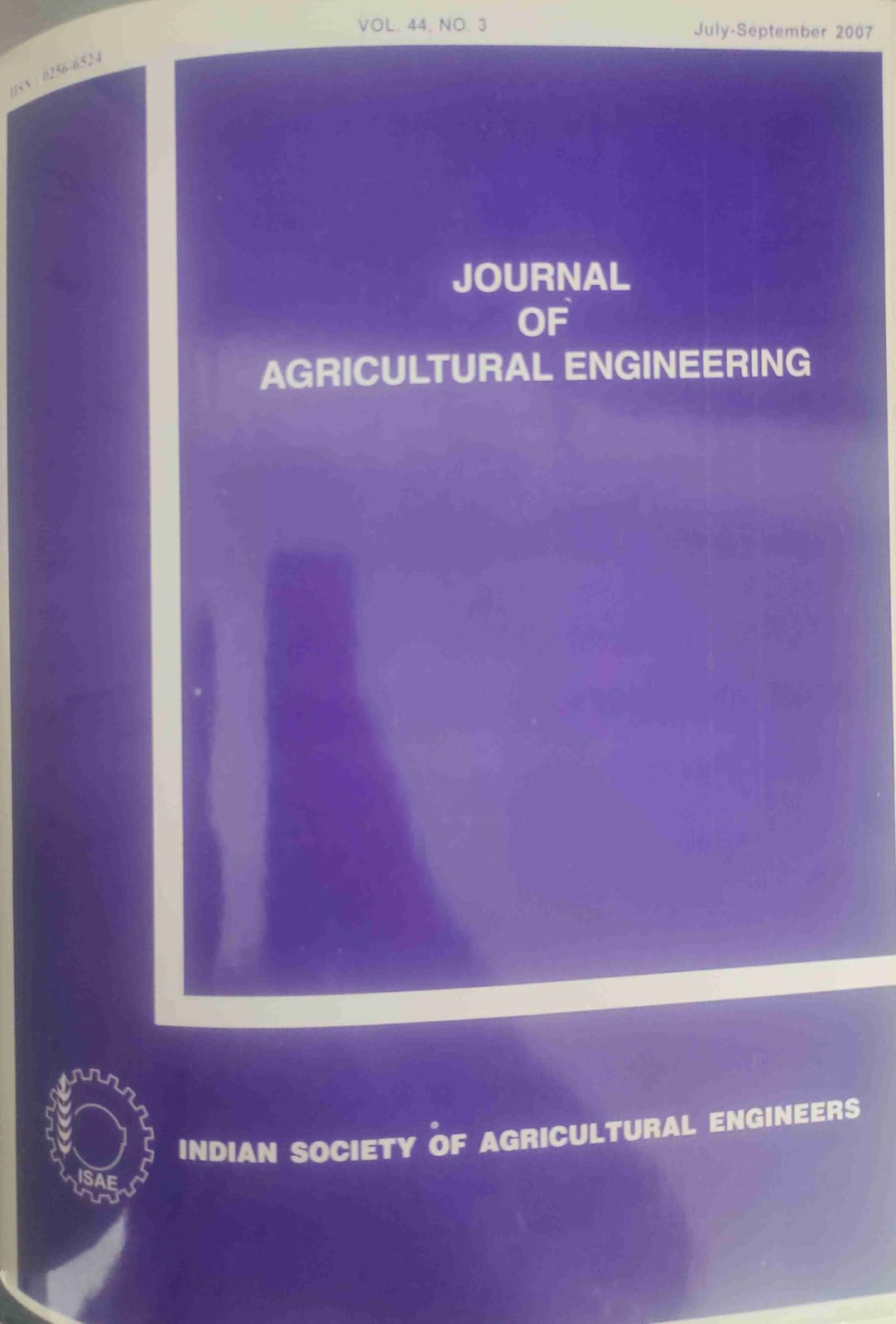Effect of Osmotic Dehydration and Drying Air Temperatures on the Quality of Dried White Button Mushroom
DOI:
https://doi.org/10.52151/jae2007443.1288Abstract
Experiments were conducted on air drying of button mushroom osmotically dehydrated in 10, 15 and 20 per cent sodium chloride (NaCl) concentration to investigate the effect of osmotic dehydration and drying air temperatures on drying characteristics of mushroom and the quality of dried mushroom. Drying was accomplished in fluidized bed dryer at 35, 40 and 50°C temperatures. The time required for drying of osmotically dehydrated mushroom to 15 to 18 per cent moisture content was found to be 5.5 to 11 h. The rate of drying increased with the increase in drying temperature. Increase in drying temperature significantly reduced the total drying time. Osmotic dehydration in NaCI had influence on the water activity of the final product. Similarly, ethylene diamine tetra acetic acid (EDTA) and potassium metabisulphate (KMS) had influence on the amino acid content, colour and rehydration ratio. EDTA treated samples were recommended on the basis of amino acid content and KMS treatment improved the colour of the dried mushroom. A loss of approximately 1.4 mg of ascorbic acid was observed during drying.
References
Arumuganathan T; Rai R D; lndurani C; Hemkar A K. 2003. Studies on rehydration characteristics of the button mushroom (Agaricus bisporus) for improved quality. ]nt. J. Mushroom Res., 12 (2), 121-123.
Bano Z; Rajarathanam S. 1988. Pleurotus mushrooms. Part II. Chemical composition, nutritional value, post harvest physiology, preservation and role as human food. C.R.C. Critical Reviews in Food Sci. Nutr., 27(2),87-158.
Chandra S; Samsher. 2002. Studies on quality of dehydrated oyster mushroom as influenced by various pretreatment and drying methods. J. Mushroom Res., 11,107-112.
Lenart A. 1996. Osmo-convective drying of fruits and vegetables: technology and application. Drying Technol., 14 (2): 391-413.
Lerici C R; Pinnavaia G; Rosa M D; Bartolucci L. 1988. Osmotic dehydration of fruit: Influence of osmotic agent on drying behaviour and product quality. J. Food Sci., 50, 1217-1219.
Mahadevan A; Sridhar R. 1982. Methods in Physiological Plant Pathology. II Edition. Sivakami Publishers, Madras.
Mau J L; Miklus M B; Beelmun R B. 1993. The shelflife of Agaricus Mushrooms. In: shelflife studies of foods and Beverages (Ed. Charalambous G.). Elsevier Science Publishers.
Mudahar G S; Bains G S. 1982. Pretreatment effect on quality of dehydrated agaricus bisporus mushroom. Indian Food Packer, 28,19-22.
Rai R D. 1995. Nutritional and Medicinal values of commercially cultivated mushroom in India. PI. Dis. Res., 5:213-215.
Rangana S. 2000. Handbook of Analysis and quality control for fruits and vegetable products. Tata McGraw Hill Publishing Co. Ltd., New Delhi.
Singh U. 2004. Study of Drying Characteristics of Button Mushroom. M.E. Thesis, CTAE, MPUAT, Udaipur.
Taylor S L; Highly N A; Bush R K. 1986. Sulfttes in foods: Uses of analytical method, residues, fats, exposure assessment, metabolism, toxicity and hypersensitivity. Adv. Food Res., 30, 1-76.














